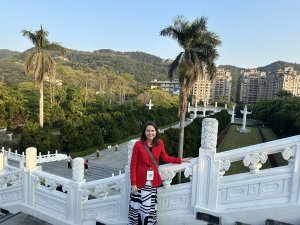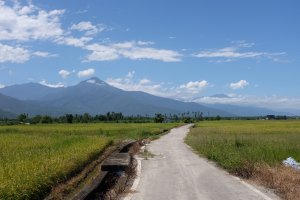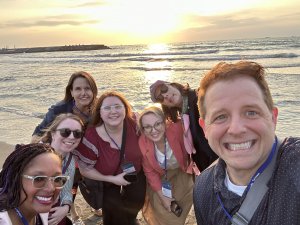Introduction
Although the classic marketing idiom says that marketing is “the battle for your mind” (Ries and Trout, 1981), research on tourist personality in relation to travel preferences is quite limited. According to Leung & Law (2010), there are 169 research articles on personality covering a broad range of topics from human personality to brand personality. However, in the human personality area, the majority of topics focus on service staff. Current research on tourist personality is insufficient.
Most reports on tourist behavior are typological. The classifications are relatively arbitrary without supportive data. For example, Cohen (1972), a frequently cited sociological paper on tourism, points that people travel to seek novelty and strangeness. Therefore, the experience of tourism is a combination of degrees of novelty and familiarity, “the security of old habits with the excitement of change.” Based on the degrees that tourists keep in their “microenvironment bubbles,” he classified tourists into four groups: the organized mass tourist, the individual mass tourist, the explorer, and the drifter.
The other famous theory on tourist behavior is by Stanley Plog (1973 & 2004). In the 1960’s when commercial flights just launched, airline companies saw the need to know why some people didn’t fly. They sponsored Plog’s team to investigate. He identified the characteristics of the non-flyer personality as having generalized anxieties, a sense of powerlessness, and territory boundness. He labeled this group as “psychocentrics” (the term later changed to “dependable”). The opposite group, people who were willing to fly, was called “allocentrics” (the term later changed to “venturers”). He described the allocentric people as more intellectually curious, energetic, self-confident, inner-directive, decisive, and often preferring to be alone. He delineates these two types along a continuum of a normal distribution curve with two extremes on both sites. Today, a short version of his Travel Personality Questionnaire is posted on Best Trip Choices (http://besttripchoices.com) as a marketing tool. Despite of the importance of this theory, how Plog designed the survey remains a business secret.
When it comes to buying behavior, people make choices for both situational and personal reasons. To better understand such reasons, it is essential to define which are situational and which are psychological, so that we can know how strong of a role personality traits play. This kind of influence is more consistent over time across various situations. The purpose of this study is to investigate how personality relates to tourist preferences on making varied decisions before, during, and after travel.
HEXACO Personality Inventory
According to the American Psychological Association’s definition, personality is defined as “individual differences in characteristic patterns of thinking, feeling and behaving.” It is a set of tendencies that people display over time and across situations. Four methods are used by psychologists to know these tendencies: (1) inventories, (2) projective tests, (3) observations, (4) interviews. This study uses the inventories method.
The inventories method was derived from the lexical hypothesis. Researchers collected all personality-descriptive adjectives from the dictionary and then used factor analysis technique to group them into a few traits. The first English language inventory was conducted by Allport and Odbert in 1936 when they identified 4500 words that describe personality. Following their work, Raymond Cattell grouped these words, factor analyzed them, and finally discovered 12 factors related to personality (1947). Ernest Tube and Raymond Christal summarized the factors to five personality dimensions, called the Big Five, which are Extraversion, Agreeableness, Conscientiousness, Emotional Stability, and Intellect/Imagination (also known as Openness to Experience) (Ashton & Lee 2012).
The Big Five has been widely used in research as a tool to evaluate personality. However, Michael Ashton and Kibeom Lee (2004) revealed that a factor was missing: the Honest and Humility factor. With the same lexical approach in several languages, they found that the sixth factor does exist in different languages including English. They compiled their findings with advanced computing technologies in order to factor analyze words more efficiently and precisely. In addition to adding the sixth factor, they also made some adjustments for the content of the other personality dimensions, as shown on Table 1.
Table 1. Broad personality factors and narrower personality traits assessed by the HEXACO
Personality Inventory Revised (HEXACO-PI-R)

Given that travel behavior involves (more or less) interactions between tourists and local people, it is valuable to include the sixth factor. This study uses the 100 question HEXACO-P-I Questionnaire (Lee & Ashton 2004). Among the 100 questions, four of them belong to a minor dimension Altruism, which is not in the six factors.
Sensation Seeking Scales (SSS)
The degree of adventurism is frequently discussed in tourist behavioral studies although there is no clear definition of the term “adventure.” Swarbrooke et al. (2003) argue that adventure tourism is always seen as a physical phenomenon, and the non-physical part, such as intellectual, emotional, and spiritual adventures, has long been ignored in scientific literature. Little research is found on non-physical adventure tourism. To address this issue, this study uses Sensation Seeking Scales to discover both physical and non-physical adventurous behaviors in relation to personality dimensions.
The concept of Sensation Seeking was first developed by Marvin Zuckerman. According to his definition, “sensation seeking is a trait defined by the seeking of varied, novel, complex, and intense sensations and experiences, and the willingness to take physical, social, legal, and financial risks for the sake of such experience” (Zuckerman 1994). Sensation seeking personality is heavily influenced by biological factors, and around 58% is genetically inherited (Fulker, Eysenck, & Zuckerman 1980). Sensation seeking is considered as a need of stimuli. Risk-taking is not usually the purpose of the action. Instead, the sensation seeker underestimates or accepts risk as the price for the experience. The Sensation Seeking Scales identify four factors (Zuckerman 1994):
Thrill and Adventure Seeking (TAS): A desire to engage in sports or other physically risky activities that provide unusual sensations of speed or defiance of gravity, such as parachuting, scuba diving, or skiing.
Experience Seeking (ES): Seeking of novel sensations and experience through the mind and senses, as in arousing music, art, and travel, and through social nonconformity.
Disinhibition (DIS): Seeking sensation through social activities like parties, social drinking, and sex.
Boredom Susceptibility (BS): An intolerance for repetitive experience of any kind, including routine work, and boring people.
There are several versions of sensation seeking questionnaires since its development in 1964. This research will adopt the Sensation Seeking Scale from the Zuckerman-Kuhlman-Aluja Personality Questionnaire (ZKA-PQ) of 40 questions.
Method
Questionnaires
Three questionnaires are used in this study:
1. Travel Preferences Questionnaire: A 50-item questionnaire mainly focusing on varied travel choices. The questions were developed from both brainstorming of possible relations with personality traits through the different stages of travel decision making. Every item is measured on a 4-point Likert scale ranging from 1-Strongly Disagree to 4-Strongly Agree.
2. Sensation seeking Zuckerman-Kuhlman-Aluja Personality Questionnaire: The questionnaire is composed of 40 items, and every item is measured on a 4-point Likert scale ranging from 1-Strongly Disagree to 4-Strongly Agree.
3. HEXACO-PI-R Self-Report Questionnaire: The questionnaire is composed of one hundred items, and every item is measured on a 5-point Likert scale ranging from 1-Strongly Disagree to 5-Strongly Agree.
A total of 190 questions are in a forced-choice form and posted on Web site http://gary741.com/questionnaire. A printed version was also provided for participants’ convenience.
Sampling
A snowball sampling method was applied. The investigator asked a variety of professions such as nurses, teachers, researchers, students, manufacture employees, farmers, service staff, etc., to answer the questions. After finishing the form, the participants were asked to forward the questionnaires to their colleagues, friends, or relatives. Participants could choose either the online version or printed version. To encourage participation, an individual personality scoring result of HEXACO with some explanation was offered to each subject.
Analysis
This study used SPSS program to analysis data collected. To test reliabilities, every dimension and sub-dimension of SSS and HEXCAO was tested by Cronbach’s coefficient alpha test. Pearson product moment correlations were produced between preferences and personality traits. Factor analyses were used to group the dimensionality of the scales with extraction by Principle Component Method to analyze correlation matrix, and with rotation by Varimax Method.
Result
Travel Planning
People who have high Conscientiousness levels combined with low Experience Seeking and Boredom Susceptibility in sensation seeking tend to make detailed plans and make a “must-visit” list for the travel. People who have a high Emotionality combined with an overall low SSS tend to make bookings in advance. On the other hand, people with low Conscientiousness combined with high SSS don’t like too much information, and acquiring too much information will very likely spoil their interests in the upcoming travel.
Type of Travel
People who are high in Openness to Experience tend to feel comfortable traveling alone (like being a backpacker, and being interested in volunteer tourism and working holidays). They also have a higher SSS in general. Among them, those who are comfortable traveling alone or interested in working holidays tend to have a lower Conscientiousness. The working holiday people also show high SSS in every dimension. Those who need a travel companion and prefer shorter trips have a high Emotionality and lower Experience Seeking level. The group tour people tend to have lower Experience Seeking and Boredom Susceptibility with relatively high Conscientiousness and low Openness to Experience.
Choosing Destinations
Eight questions about destination preferences were asked. People who are high in Emotionality and low in SS are more concerned about safety and will avoid less developed countries, and they also favor scenic and popular places and prefer domestic travel. People with low SS tend to avoid traveling far away from home and like to travel domestically.
Transportation
There is no significant personality feature for people who avoid taking airplanes. High Openness to Experience and low Emotionality are closely related to the preference for using public transportation over driving.
Food
The willingness to try local food and local cuisine is commonly related to Extroversion personality. People who choose the local food also have higher Experience Seeking personality and are more extroverted. On the other hand, people who prefer their home food while traveling have lower Openness to Experience and lower Boredom Susceptibility.
Accommodation
People who prefer guest houses and youth hostels share a similar personality with people who like camping in general; both are significantly higher in the TAS, ES, DIS dimensions of SSS, and higher in Openness to Experience. People who choose to stay in basic accommodation to save money are higher in Experience Seeking and Openness to Experience as well. On the contrary, people who prefer luxury and comfortable hotels are in a different group, are lower in Experience Seeking and Boredom Susceptibility, and higher in Emotionality. One thing interesting but requires further investigation is that the luxury and comfort seeking people have a significantly lower score in the sub-dimension of Greed-Avoidance.
Activities
Four different groups are found. People who like theme parks, enjoy the relaxation of varied facilities and services, and buy luxury brands generally have lower Honesty-Humility and Openness to Experience scores and a lower SSS. Secondly, people who prefer participating in local events, culture, and ways of living tend to have higher SSS and higher Openness to Experience. Thirdly, the outdoor people are significantly different from the people who prefer less strenuous activities such as visiting museums or simple walking. Lastly, people who like just wandering around or choosing souvenirs are more Experience Seeking. This last group is also close to the second group.
After Travel
People with higher Conscientiousness tend to file complaints or tell others about poor services. Extroversion and Altruism people tend to share their travel experiences with others. In terms of displaying souvenirs at home, no significant personality was found.
Thoughts about Travel
Higher extroverted people are more likely to travel if they have money. People higher in Extroversion, Openness to Experience, and Experience Seeking tend to think of travel as a way of returning to the true-self. People with higher Emotionality tend to think of travel as a way to escape reality. In general, people seldom think of travel as a waste of money, but the low Experience Seeking and low Altruism people tend to evaluate travel that way.
Conclusion
From this research, we found that there are two significant groups that carry distinct personality combinations:
1. The experience seeker.
This type of tourist usually has higher Sensation Seeking Scales. In the HEXACO personality dimensions, they are higher in the traits of Openness to Experience, lower in Conscientiousness, and lower in the trait of Emotionality. Before travel, they don’t like to plan or search for information in advance; during travel, they don’t mind traveling alone and like to immerse themselves in local life. They usually stay at local-run accommodations and eat local food. The delicacy of amenities may not be their major concern. They tend to participate in outdoor activities or interact with locals to learn the local history and culture.
2. The material-dependent.
This type of tourist usually has lower Sensation Seeking Scales. They are usually higher in the HEXACO personality traits of Conscientiousness and Emotionality and lower in Openness to Experience. These people may have lower Greed-Avoidance in the sub-dimension of Honesty-Humility. In terms of their travel preferences, they tend to make extensive information searches and make detailed plans, or just decide to join organized tours before travel. They are more safety-concerned when choosing a destination. The purpose of their travel is more relaxation-based than interaction with locals. Therefore, they are willing to pay more to stay in fine hotels to enjoy facilities and services, and they like to eat familiar food. They also tend to purchase luxury brands. They are more concerned about service quality and are more likely to file complaints or tell other people about poor service.
For the limitations of this research, we cannot identify which of the above types travel more. However, we found that extroverted people are more likely to spend money on travel, but their travel type varies. When it comes to travel preferences, the personality of Extroversion has fewer influences. Instead, Emotionality, Conscientiousness, Openness to Experience, and degree of Sensation Seeking play significant roles. Extroversion significantly relates to the preference in trying local food. It seems Agreeableness is related to being interested at knowing local daily life and cultures, and Honesty-Humility is related to materialism in travel, but more research and is needed.
The results of this study are congruent with Plog and Cohen’s theory in general, but provide more specific information of personality dimensions. Knowing the specific personality in relation to travel preferences allows marketers to better segment the different target markets and have travel product combinations to meet different tourists’ interests.
References
Ashton, M. C. (2013). Individual differences and personality (2nd ed.). San Diego: Academic Press.
Cohen, E. (1972). Toward a sociology of international tourism. Social Research, 39 (1), pp. 164–182.
Fulker, D. W., Eysenck, S. B. G., & Zuckerman, M. (1980). A genetic and environmental analysis of sensation seeking. Journal of Research in Personality, 14, 261–281.
Lee, K. & Ashton, M. C. (2004). Psychometric properties of the HEXACO personality inventory. Multivariate Behavioral Research, 39, 329-358.
Lee, K., & Ashton, M. C. (2012). The H factor of personality: Why some people are manipulative, self-entitled, materialistic, and exploitive– and why it matters for everyone. Waterloo, Ont: Wilfrid Laurier University Press.
Leung, R. & Law, R. (2010). A Review of personality research in the tourism and hospitality context. Journal of Travel & Tourism Marketing, 27(5), pp439- 459.
Plog, S. C. (1973). Why destinations areas rise and fall in popularity? Cornell Hotel and Restaurant Association Quarterly, 13, 6-13.
Plog, S. C. (2004 ). Leisure travel: A marketing handbook. Pearson Education, Inc.
Ries, A. and Trout, J. (1981) Positioning: The battle for your mind, Warner Books – McGraw-Hill Inc., New York, 1981
Swarbrooke et al. (2003). Adventure tourism: The new frontier. Elsevier Science Ltd.
Zuckerman, Marvin (2007). Sensation seeking and risky behavior. Washington, DC: American Psychological Association.
Zuckerman, M. (1994). Behavioral expressions and biosocial bases of sensation seeking. New York: Cambridge Press.
Post Views: 5,320





